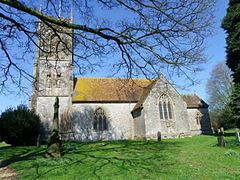Population 328 (in 2011) Unitary authority Dialling code 01985 Post town Warminster | OS grid reference ST772365 Sovereign state United Kingdom | |
 | ||
Kilmington is a village and civil parish in the extreme west of Wiltshire, England, about 8 miles (13 km) southwest of Warminster. The parish includes the hamlets of Kilmington Common and Norton Ferris.
Contents
Map of Kilmington, Warminster, UK
It lies on the northern edge of the ancient Selwood Forest. Whitesheet Hill is in the far east of the parish, and Long Knoll (288m above sea level) is a long ridge on the northern boundary of the parish.
In 1556 Kilmington was the scene of the ambush and murder of two members of the Hartgilll family by Charles Stourton, 8th Baron Stourton, for which crime he was convicted and executed.
Religious sites
The Church of England parish church of St Mary has a 15th-century tower but the body of the church was rebuilt in 1864 and 1869; the tower was restored in 1903 by C.E. Ponting.
A Wesleyan Methodist chapel was built in 1847. After closure in 1972 it was sold for residential use.
Local government
The civil parish elects a parish council. It is in the area of Wiltshire Council unitary authority.
Until 1896 Kilmington was in Somerset. The parish was part of Norton Ferris Hundred.
Amenities
The school at Kilmington caters for the younger pupils of Whitesheet Church of England Primary Academy, while older children attend the school at Zeals. The first school at Kilmington was built circa 1830 and replaced by a new building in 1874, attended by children of all ages until 1930 when it became a junior school. The building was enlarged in 1967 and pupil numbers increased in 1968 after the closure of the school at Maiden Bradley. In 2003 Kilmington school amalgamated with Zeals, forming a two-site school.
There is a local pub, the Red Lion. Kilmington is about 2.5 miles (4.0 km) north of the Stourhead estate, where the house and gardens are owned by the National Trust.
